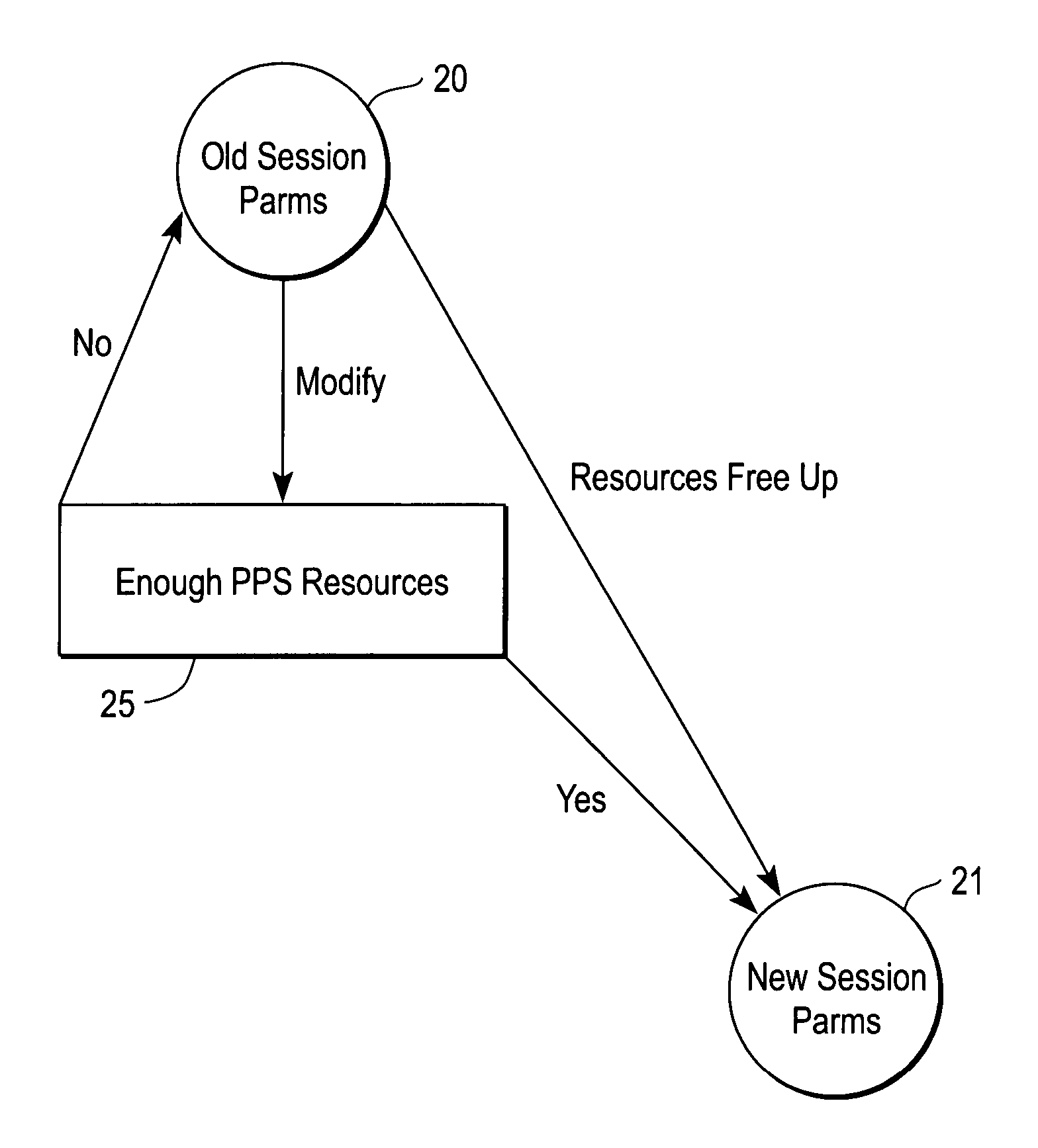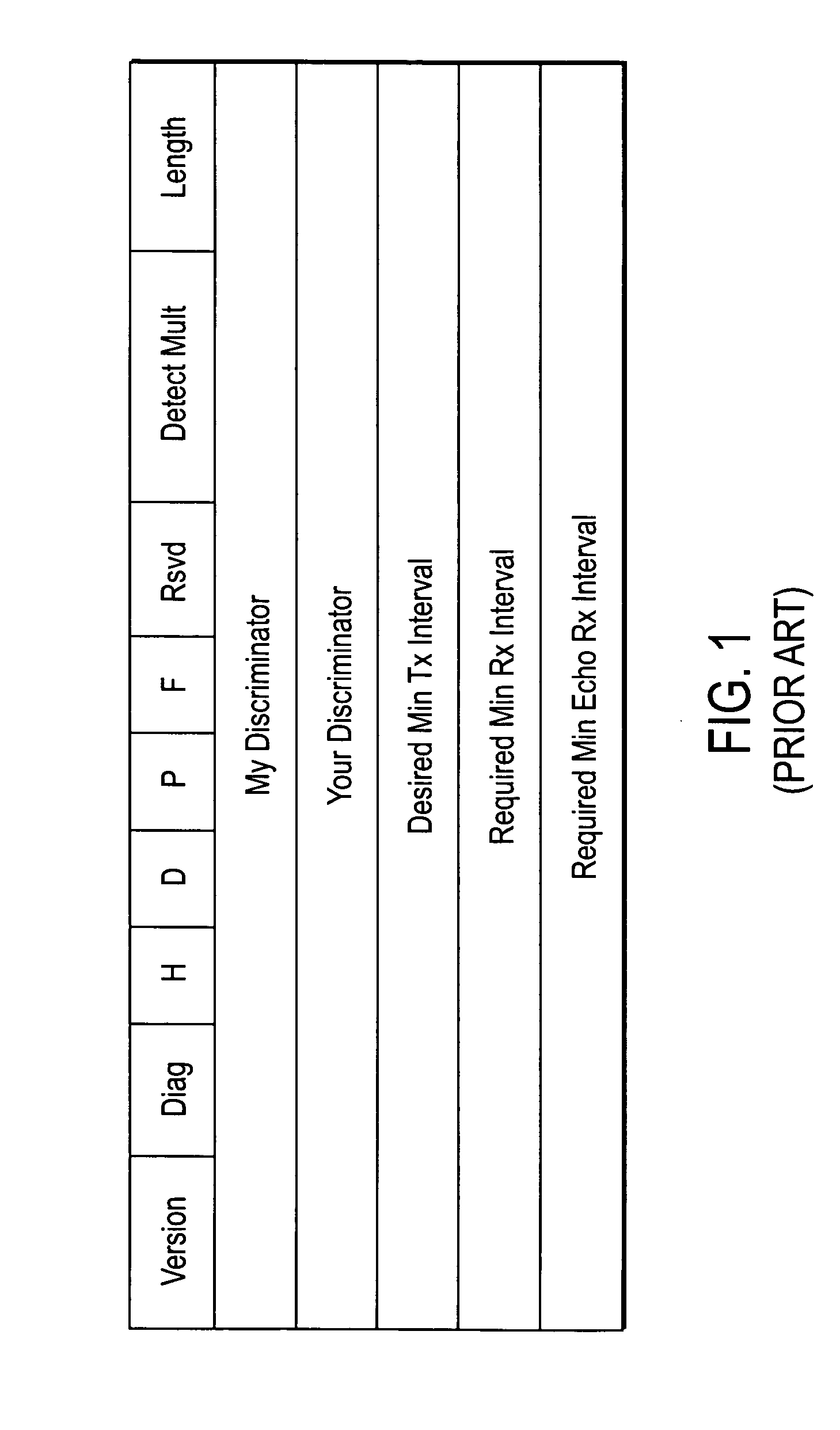BFD rate-limiting and automatic session activation
a technology of automatic session activation and bfd rate limitation, applied in the field of network routers, can solve problems such as significant data traffic loss, unfavorable detection of faults or false positive alarms, and inability to negotiate compatible hello intervals
- Summary
- Abstract
- Description
- Claims
- Application Information
AI Technical Summary
Benefits of technology
Problems solved by technology
Method used
Image
Examples
Embodiment Construction
[0018]A system and method for BFD rate-limiting and automatic BFD session activation is described. In the following description specific details are set forth, such as data rates, protocols, configurations, etc., in order to provide a thorough understanding of the present invention. However, persons having ordinary skill in the networking arts will appreciate that these specific details may not be needed to practice the present invention.
[0019]According to one embodiment of the present invention, a state machine implemented on a line card of a network node (e.g., a router) operates to rate-limit BFD sessions without dropping BFD packets. The state machine may be embodied in software, hardware, firmware, or in another machine-readable form. In the event that BFD sessions are over-subscribed or over-configured, previously created sessions (via configuration) are maintained in an administrative “down” (ADMIN_DOWN) state, analogous to a waiting room. The down BFD sessions do not transmi...
PUM
 Login to View More
Login to View More Abstract
Description
Claims
Application Information
 Login to View More
Login to View More - R&D
- Intellectual Property
- Life Sciences
- Materials
- Tech Scout
- Unparalleled Data Quality
- Higher Quality Content
- 60% Fewer Hallucinations
Browse by: Latest US Patents, China's latest patents, Technical Efficacy Thesaurus, Application Domain, Technology Topic, Popular Technical Reports.
© 2025 PatSnap. All rights reserved.Legal|Privacy policy|Modern Slavery Act Transparency Statement|Sitemap|About US| Contact US: help@patsnap.com



